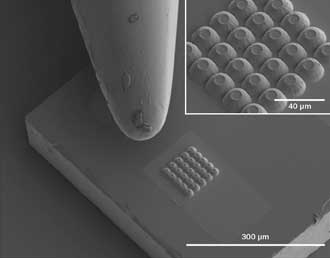Navigation
Install the app
How to install the app on iOS
Follow along with the video below to see how to install our site as a web app on your home screen.
Note: This feature may not be available in some browsers.
More options
You are using an out of date browser. It may not display this or other websites correctly.
You should upgrade or use an alternative browser.
You should upgrade or use an alternative browser.
OLED?
- Thread starter Icy006
- Start date
LG has talked about producing a 40-49" 4K panel in late 2019-2020. The UP3017Q would have been a game changing market leader if they had gone with 120hz as originally planned and not crippled it with 60hz... regardless I don't think it ever made it to actual production, they just sold off the small set of trials they built and that was that.
EniGmA1987
Limp Gawd
- Joined
- May 2, 2017
- Messages
- 429
Samsung's MicroLED should be the better choice for computer monitors as it is similar to OLED but fixes the image retention/burn in issues. I bet we will start seeing monitors go to this tech rather than OLED. The first MicroLED TV will be out later this year, so Id expect monitors to start popping up in late 2019-2020
RPGWiZaRD
[H]ard|Gawd
- Joined
- Jan 24, 2009
- Messages
- 1,217
Oh god, so long I've been waiting for smaller OLED TVs, 46~49" so I could actually fit one in my living room without doing major changes to furniture. FINALLY there's some news about it, too bad I really could have have use for one like early next year preferably but whatever, my Panasonic Plasma will have to do meanwhile.
defaultluser
[H]F Junkie
- Joined
- Jan 14, 2006
- Messages
- 14,398
Samsung's MicroLED should be the better choice for computer monitors as it is similar to OLED but fixes the image retention/burn in issues. I bet we will start seeing monitors go to this tech rather than OLED. The first MicroLED TV will be out later this year, so Id expect monitors to start popping up in late 2019-2020
MicroLED will suck even worse for monitors. That The Wall gimmick TV is as high a density as they will be getting today. And that's 30ppi horiz.
For comparison, a 55 inch OLED TV is 80ppi, and Dell's 30" UP3017Q is 146ppi. Not even in the same neighborhood.
MicroLED has been around for many years. The density wall has never been surpassed, so the industry went through the trouble of developing OLED. Samsung is pushing QLED as an alternative, since they lack the fixes LG implemented for their TVs. In the mean-time, Samsung wants people to think they're doing something, while QLED pixel displays are still stuck in the labs.
FALD is also hitting the same density wall MicroLED is, so VA can't save you.
OLED is your only hope. Burn-in gets to be less and less of a problem every day, just like it did with new CRT technologies.
Last edited:
Samsung's MicroLED should be the better choice for computer monitors as it is similar to OLED but fixes the image retention/burn in issues. I bet we will start seeing monitors go to this tech rather than OLED. The first MicroLED TV will be out later this year, so Id expect monitors to start popping up in late 2019-2020
Samsung marketing at its finest.
defaultluser
[H]F Junkie
- Joined
- Jan 14, 2006
- Messages
- 14,398
Samsung marketing at its finest.
Right, Sony demonstrated a higher-ppi version of this tech back in 2012. Crystal LED, 55" lab prototype. 40ppi, horizontal
https://www.cnet.com/news/sony-unveils-crystal-led-display-at-ces/
The production version from Samsung 5 years later is lower (30 ppi), but much larger because of the Lego-consruction.
Seems you can't produce the 40ppi of the lab prototype, and things seem to only be headed in-reverse. Sony's latest Crystal LED PRODUCT is even bigger than he Wall, but only 20ppi.
http://avstumpfl.com/en/references/sonys-crystal-led-display-system-at-infocomm/
Anyone want to chime in with something MicroLED with higher density than 30ppi? A simple 1080p 22" monitor is 100ppi horiz!
That same 22" MicroLED monitor at 30ppi horizontal would give you 580x325 resolution! Back to the bad old days of EGA, except on a giant of a 22" monitor
So basically, MicroLED looks great on a monitor. If you don't mind the completely blurred picture. We're not even talking DVD-quality here
Last edited:
l88bastard
2[H]4U
- Joined
- Oct 25, 2009
- Messages
- 3,712
Hopefully they can inkjet 144hz into that 31" 4k panel


If that 31" panel makes it into a display with a good gaming feature set (VRR/G-sync) and a decent price it will be quite tempting to pick it up as a dedicated gaming display in a dual-monitor setup, alongside a regular IPS LCD for productivity/general desktop use.
That's a big "if," though. I can see display manufacturers being wary of the potential high rate of RMAs if burn-in proves to be too much of a problem, and it's entirely possible this panel could get relegated to the high priced medical or color proofing display market. I suspect Asus' 21.6" OLED is a low volume trial run product to get some data on just how big a problem it is in real world usage.
That's a big "if," though. I can see display manufacturers being wary of the potential high rate of RMAs if burn-in proves to be too much of a problem, and it's entirely possible this panel could get relegated to the high priced medical or color proofing display market. I suspect Asus' 21.6" OLED is a low volume trial run product to get some data on just how big a problem it is in real world usage.
Well at least someone is trying. I would happily pay $5000 for a ~30ish inch 4K 144hz OLED screen, even if it doesn't have VRR. Hell, if there's panel availability and capability, maybe Zisworks could put something together if the usual suspects can't be bothered to do the electronics for more than 60hz.
EniGmA1987
Limp Gawd
- Joined
- May 2, 2017
- Messages
- 429
MicroLED will suck even worse for monitors. That The Wall gimmick TV is as high a density as they will be getting today. And that's 30ppi horiz.
For comparison, a 55 inch OLED TV is 80ppi, and Dell's 30" UP3017Q is 146ppi. Not even in the same neighborhood.
MicroLED has been around for many years. The density wall has never been surpassed, so the industry went through the trouble of developing OLED. Samsung is pushing QLED as an alternative, since they lack the fixes LG implemented for their TVs. In the mean-time, Samsung wants people to think they're doing something, while QLED pixel displays are still stuck in the labs.
FALD is also hitting the same density wall MicroLED is, so VA can't save you.
OLED is your only hope. Burn-in gets to be less and less of a problem every day, just like it did with new CRT technologies.
MicroLED was only invented just less than 8 years ago, it is barely out of its infancy and just getting started on the process nodes to make the technology useful. OLED in comparison has been around for over 30 years, though it too only got to the point where technology made it useful a few years ago. As for your density assumption, There are many reports of Micro LED pixels around 100um each, and newer reports of people reaching 20um in size. Since you need 3 of these for a pixel, even pretending we were going square the size would be .3mm in size with the larger 100um mLEDs. Which in reality it would be smaller but whatever, even .3mm is still smaller than pixels have to be for 4k resolution in a regular 65" screen. For reference, the pixel size for 4k in a 65" form factor is .433mm. As for combining all that density into a panel, your assumptions about not being able to get high ppi is completely wrong, the reason we havent seen much density from Sony isa the difficulty in making the whole display functional with that many LEDs, not an inability to pack them densly at all. The Samsung wall is also much more dense than you are assuming. You cannot take the total screen size and divide by the resolution, doesnt work that way on this one. Samsung was able to make the mLED tech functional by no longer printing a whole TV panel at once, but instead printing 4" square sections. These modules fit together to make the whole display, and the display is scaled to the resolution required. Each module though has much higher density than the whole displays total resolution would suggest. Oh and the record so far in density? 1,700ppi on a smartwatch sized display back in 2014 using MicroLED tech.
All I see from your post is assumptions about the tech and what Samsung is doing, without anything being shown that has a factual basis.
And here is a cool picture of 25 microLEDs shown on a substrate next to the head of a needle:

Last edited:
jeffo911
n00b
- Joined
- Mar 15, 2018
- Messages
- 30
Seriously tho hahahahahaSamsung marketing at its finest.
- Joined
- Aug 20, 2006
- Messages
- 13,000
I got tired of waiting, so I just replaced my sofa with a new desk and put it in front of my 55" OLED.
![[H]ard|Forum](/styles/hardforum/xenforo/logo_dark.png)